Check out the wonderful review article and interview by Andrew Coletti on The Exile’s Cookbook in Gastro Obscura today!


Bringing Medieval Arab Cooking to Life
Check out the wonderful review article and interview by Andrew Coletti on The Exile’s Cookbook in Gastro Obscura today!

A succulent recipe from The Exile’s Cookbook for a leg of lamb with salt, pepper, coriander, fig vinegar, murrī and olive oil. However, it wouldn’t be a medieval Andalusian dish if it did not contain eggs, now would it! In this case, you need five eggs which are beaten together with flour and breadcrumbs into a mixture which serves to coat the meat. The suggested serving is i a bowl, and there really is no reason not to comply with that recommendation! For accompaniments? Well, it goes well with some bread and salad of your liking!


There are a number of khabis (خبيص) recipes in the medieval culinary tradition and often vary considerably in terms of ingredients and method from their present-day namesake, which is particularly associated with the Arabian Gulf. This khabis recipe from The Exile’s Cookbook is quite close to the modern sweet, as well as to dishes from other parts of the Arabic-speaking world, such as the Algerian tamina (طمينة). It is very simple to make and requires cooking honey, water, saffron, cinnamon pepper and spikenard before adding semolina. Then, it’s simply a question of stirring until you obtin the required consistency ‘of a thick pottage’. Before serving,olive oil is added to the pot for that extra bit of lubrication! Note that the khabis should be eaten cold. An important difference between this historic version and the modern descendants is that the latter generally call for toasted semolina.
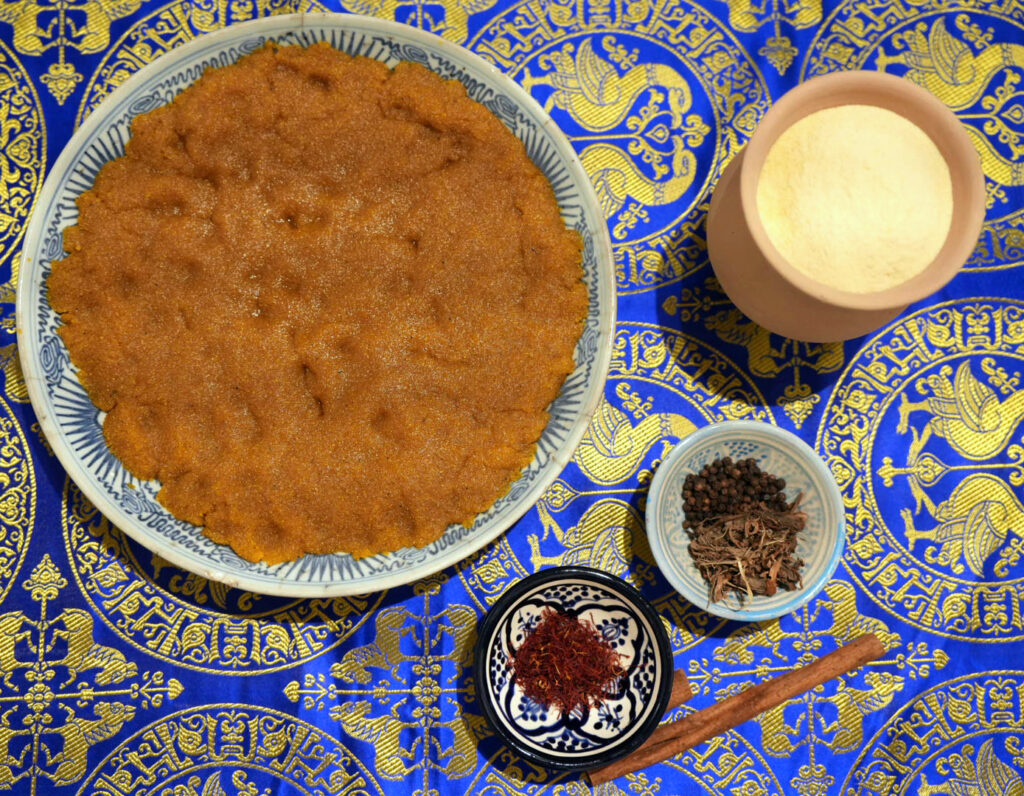
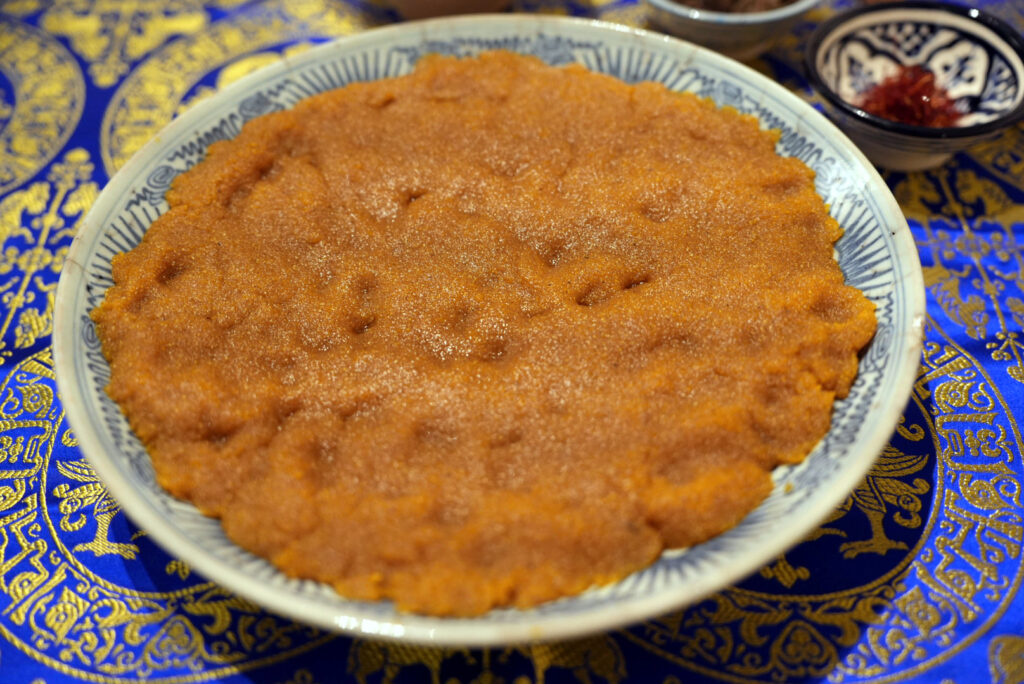
A wonderful review article on The Exile’s Cookbook and the history of Arab cuisine in the Weekend section of Arab News.
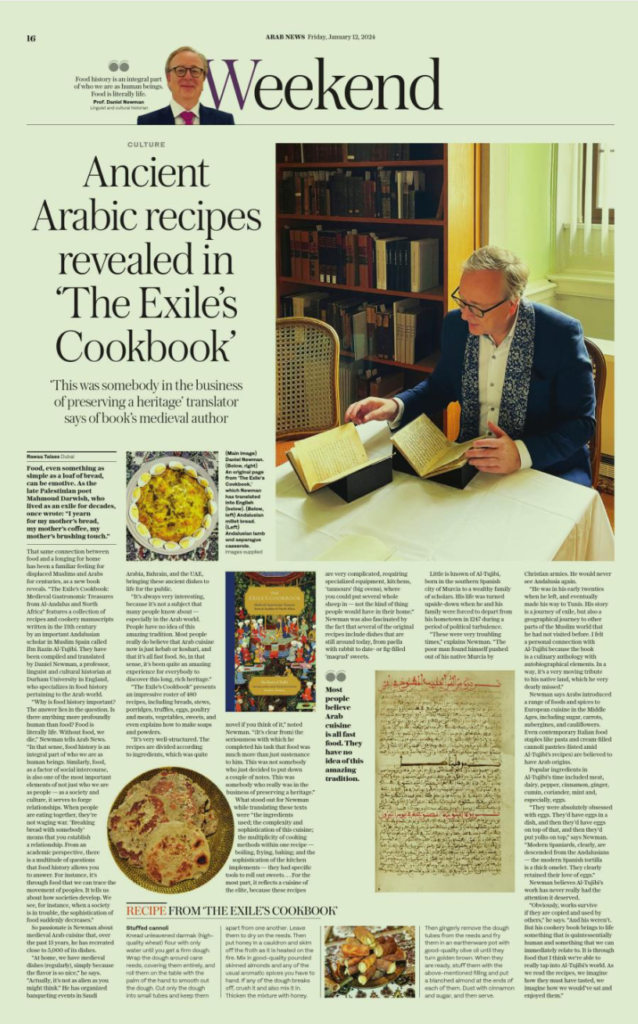
This is a recreation of a 13th-century Aleppine recipe for a drink made with pomegranate seeds, fresh mint leaves, sugar and a dash of rose water. For that real medieval experience you might wish to consider fumigating the goblet from which you drink with that most aromatic of spices, ambergis! It is best drunk chilled with some crushed ice — a delightful mocktail to suit all occasions!
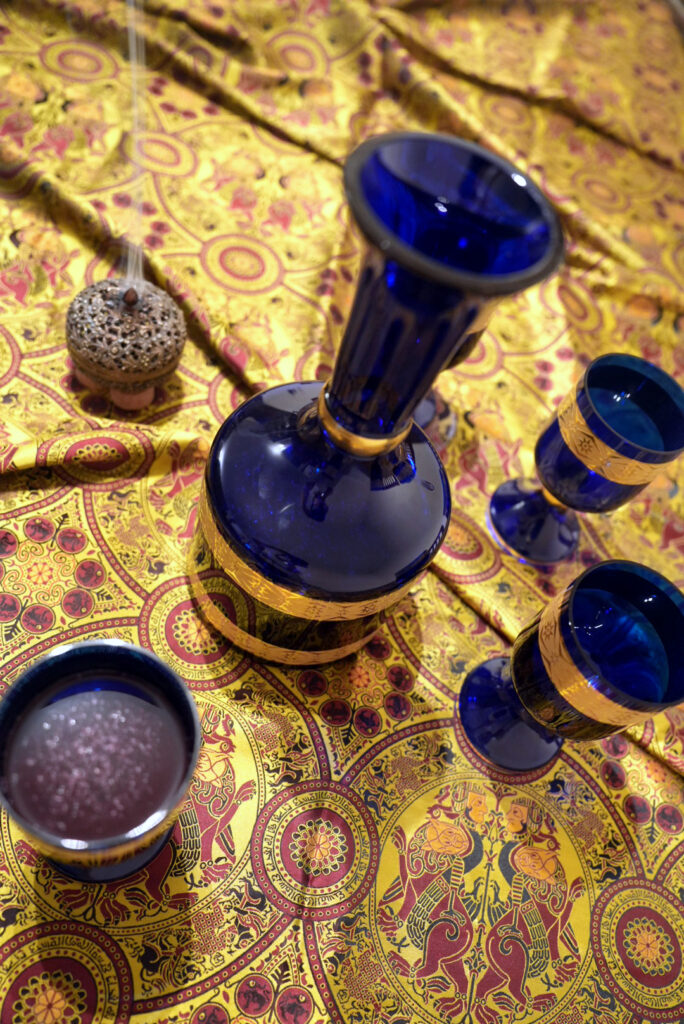
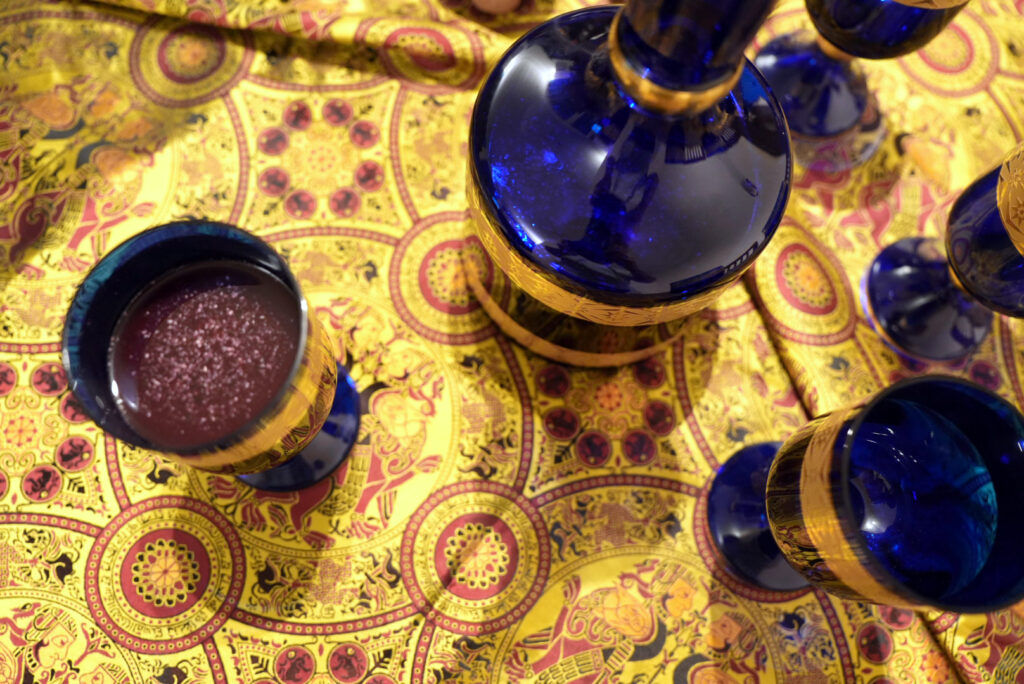
According to the recipe in The Exile’s Cookbook, one should take medium-sized olives harvested in October, before they become ripe. These are preserved in water and salt until they are ready for use. However, before serving the olives, coat them in olive oil and oregano. Served with some bread, they can be both a delicious snack and a light meal.

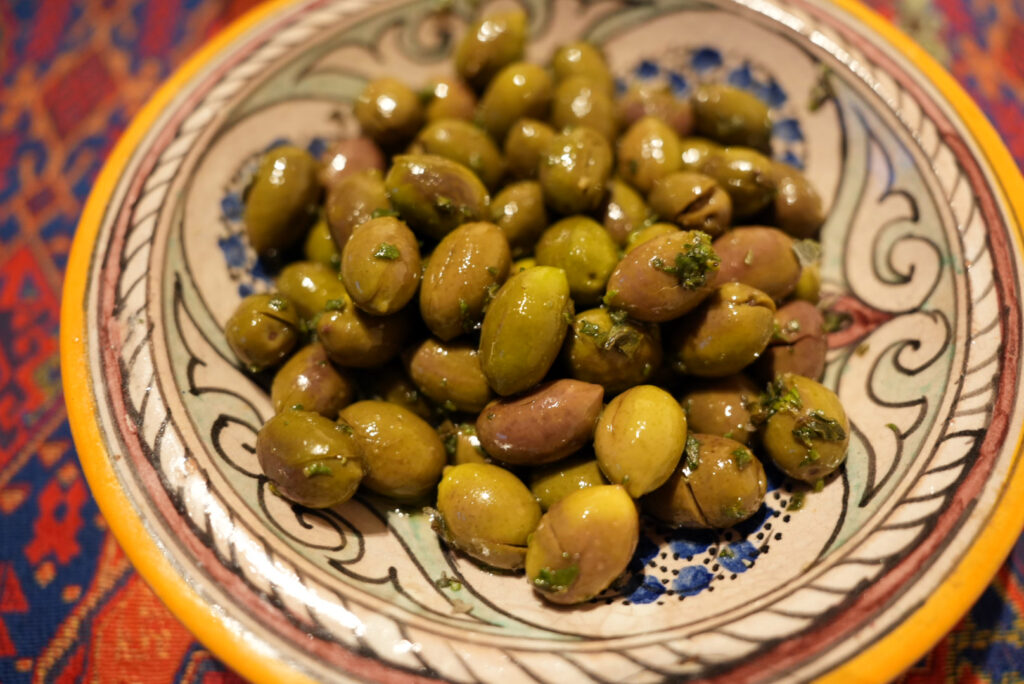
Check out the detailed coverage of the ‘Fujairah Feast’ (وليمة الفجيرة ) held on the 27th of December at the Fujairah Fort in the leading Emirati lifestyle magazine Kull al-Usra and The Khaleej Times of the ‘Fujairah Feast’ (وليمة الفجيرة ).
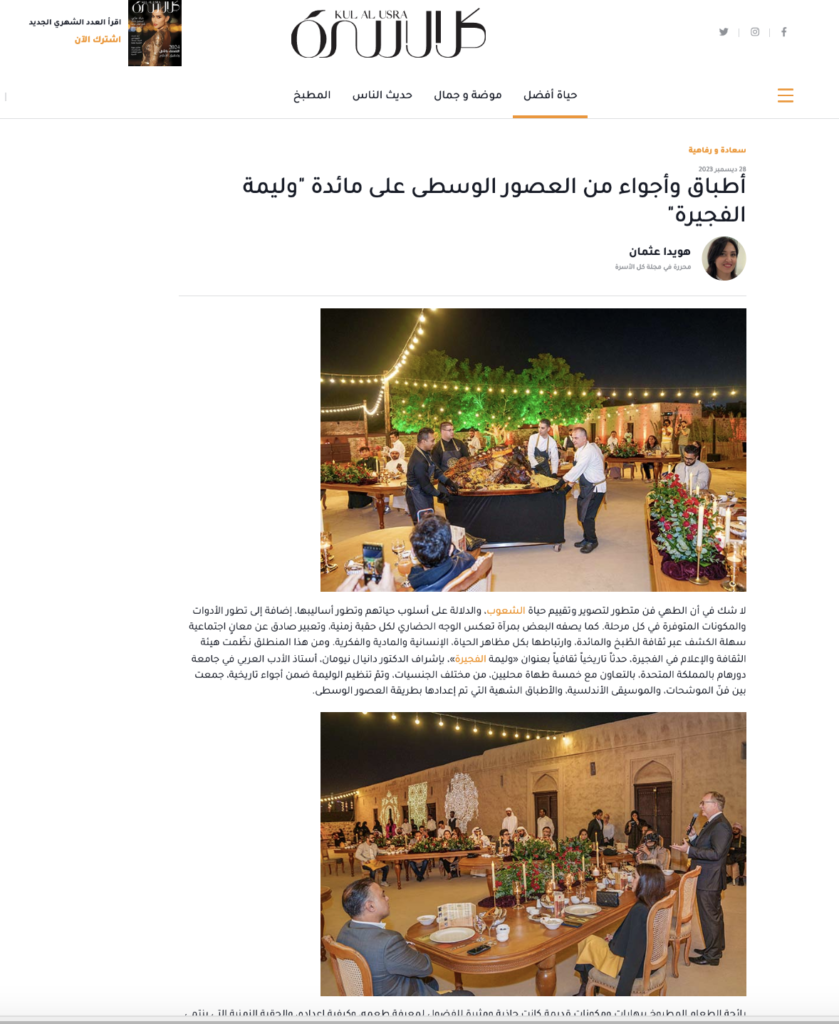
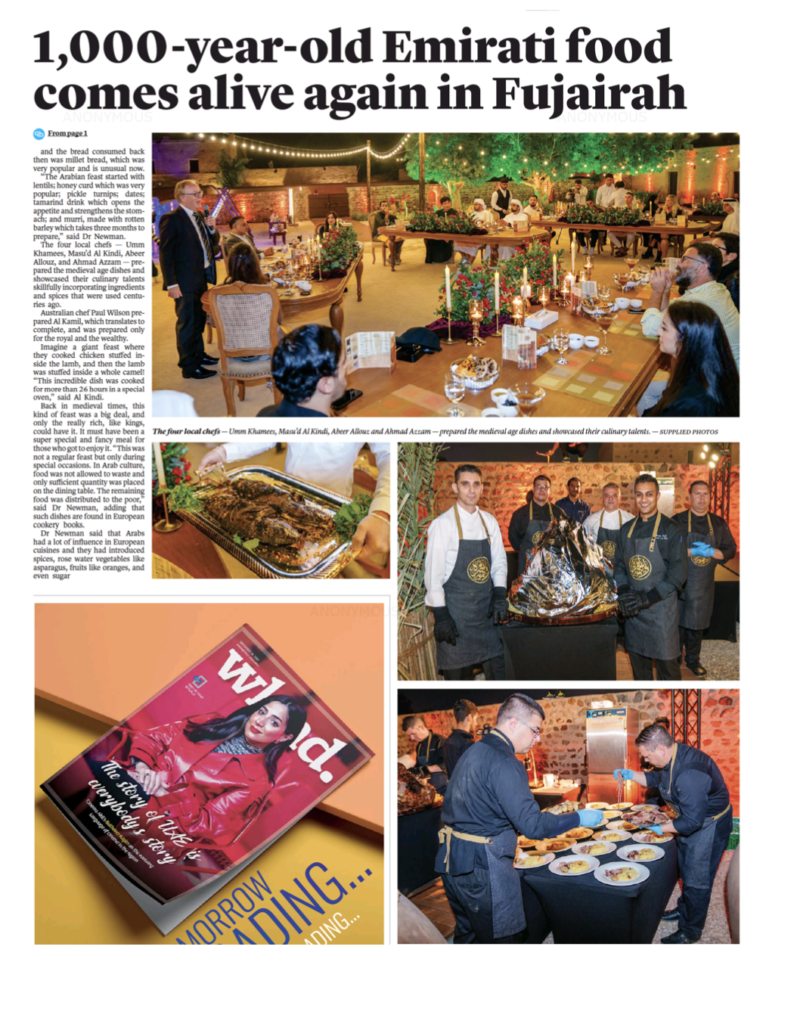
This month, I curated three medieval banquets in the Emirate of Fujairah in the United Arab Emirates, as part of a research project on ‘Medieval Arab Cooking: Identity and Culinary Heritage’. The events were organised under the patronage of His Highness, Sheikh Mohammed bin Hamad al-Sharqi, Crown Prince of Fujairah, who also provided generous support throughout, and in collaboration with the Fujairah Culture and Media Authority. Here are some of the highlights from some of the events, including the cooking of the most spectacular dish of the day, a stuffed camel!
An unusual sweet recipe from The Exile’s Cookbook, made with honey which is heated and stirred with a giant fennel stalk. When it cools down, egg whites are mixed in and then the mixture is heated up again until it thickens and whitens. The final ingredient is almonds or walnuts, as per one’s individual taste. It has a nougat-like consistency and is one of several Arab ancestors to various European confections.
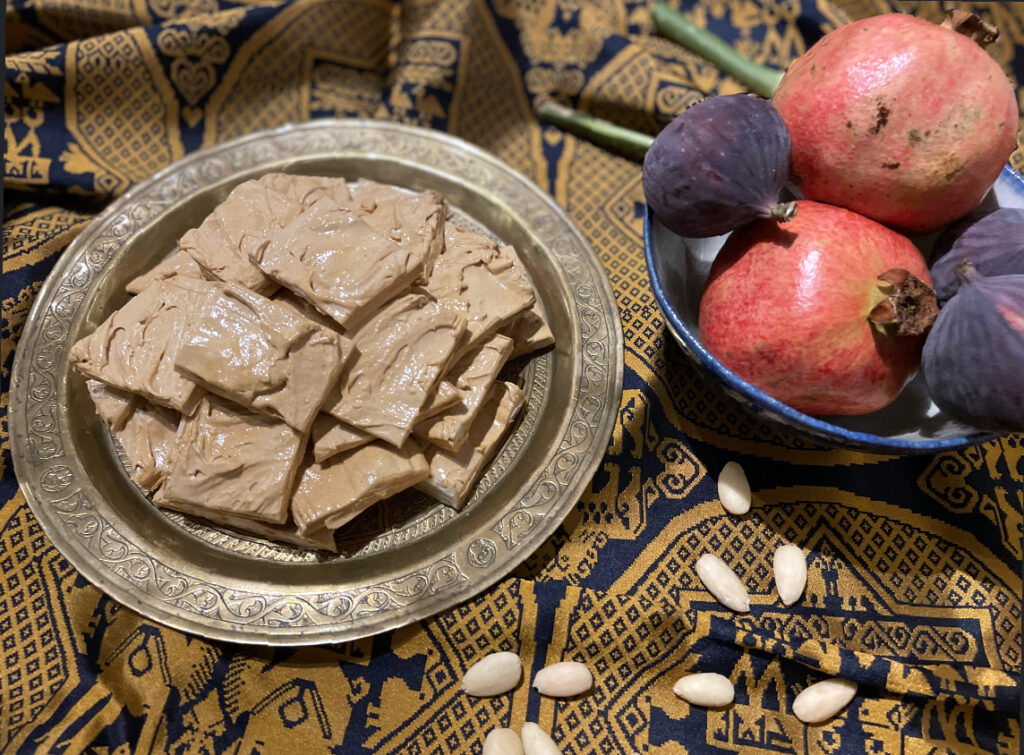
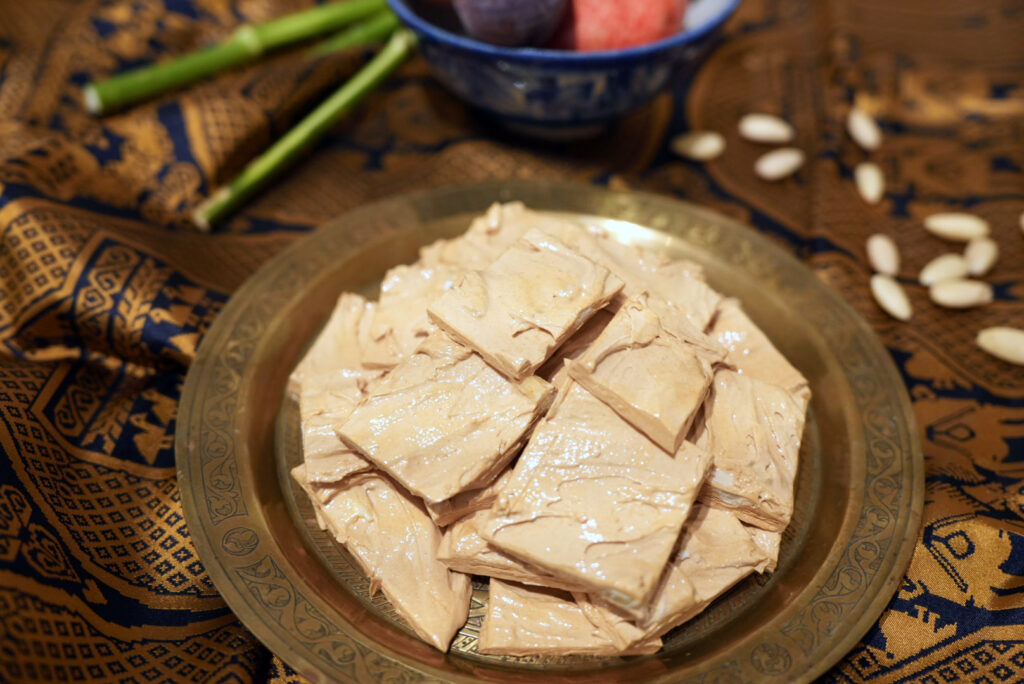
I attended COP28 (30th November-12th December) in Dubai (UAE) to take part in an exciting project relating to food sustainability and local heritage, in collaboration with the Barakat Trust and Al Ghadeer Emirati Crafts, a pioneering project under the aegis of the United Arab Emirates (UAE) Red Crescent Authority. The aim of the association is to empower local craftswomen by providing them with a sustainable source of revenue.
At the COP28 site, I curated a date tasting workshop through a number of carefully selected recipes based on the medieval culinary sources from the 8th to the 15th centuries. The dishes included stuffed honeyed dates, a meat-and-date stew (tamriyya), a milky date pudding (khabis) and a cereal-based date drink (subiya).